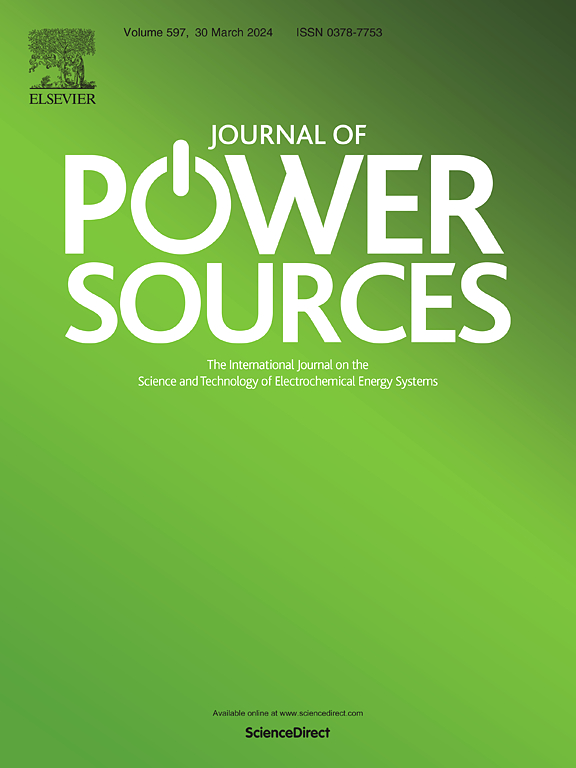In Situ Surface-Enhanced Infrared Absorption Spectroscopy to Explore the Stability of Electrolyte in Nonaqueous Lithium Oxygen Batteries
IF 8.1
2区 工程技术
Q1 CHEMISTRY, PHYSICAL
引用次数: 0
Abstract
Tetraethylene glycol dimethyl ether (TEGDME) decomposition on the Au electrode surface is studied using in situ attenuated total reflectance surface enhanced infrared absorption spectroscopy (ATR-SEIRAS). Due to the weak solvation of TEGDME, the superoxide intermediate (LiO2/O2−) of the discharge process rapidly gains electrons on the electrode surface to generate Li2O2. Furthermore, alkyl radical, formed by LiO2/O2− extracting hydrogen from ether, undergoes oxidative decomposition reactions to form by-products. During the charge process, amorphous film-like Li2O2 obtained from surface-phase mechanism oxidizes in the low potential range of 3–3.4 V, while the oxidation potential of large-sized crystal Li2O2 particles obtained from solution-phase mechanism is above 3.4 V. Besides, TEGDME is intrinsically unstable and can decompose at 3.8 V even the solution is saturated with argon, indicating that the degradation of ether-based electrolyte is inevitable during the cycling process. This work confirms the feasibility of ATR-SEIRAS in probing the reaction mechanism and electrolyte stability of lithium oxygen batteries, and provides direct spectroscopic evidence for subsequent optimization of electrolyte components.
利用原位表面增强红外吸收光谱法探索非水锂氧电池中电解质的稳定性
利用原位衰减全反射表面增强红外吸收光谱(ATR-SEIRAS)研究了金电极表面的四乙二醇二甲醚(TEGDME)分解。由于 TEGDME 的弱溶解性,放电过程中的超氧化物中间体(LiO2/O2-)在电极表面迅速获得电子,生成 Li2O2。此外,LiO2/O2- 从醚中萃取氢形成的烷基自由基会发生氧化分解反应,形成副产品。在充电过程中,由表面相机制得到的无定形薄膜状 Li2O2 在 3-3.4 V 的低电位范围内氧化,而由溶液相机制得到的大尺寸晶体 Li2O2 粒子的氧化电位在 3.4 V 以上。此外,TEGDME 本身并不稳定,即使溶液中的氩气达到饱和,它也能在 3.8 V 的电压下分解,这表明醚基电解质在循环过程中的降解是不可避免的。这项工作证实了 ATR-SEIRAS 在探测锂氧电池反应机理和电解液稳定性方面的可行性,并为后续优化电解液成分提供了直接的光谱证据。
本文章由计算机程序翻译,如有差异,请以英文原文为准。
求助全文
约1分钟内获得全文
求助全文
来源期刊

Journal of Power Sources
工程技术-电化学
CiteScore
16.40
自引率
6.50%
发文量
1249
审稿时长
36 days
期刊介绍:
The Journal of Power Sources is a publication catering to researchers and technologists interested in various aspects of the science, technology, and applications of electrochemical power sources. It covers original research and reviews on primary and secondary batteries, fuel cells, supercapacitors, and photo-electrochemical cells.
Topics considered include the research, development and applications of nanomaterials and novel componentry for these devices. Examples of applications of these electrochemical power sources include:
• Portable electronics
• Electric and Hybrid Electric Vehicles
• Uninterruptible Power Supply (UPS) systems
• Storage of renewable energy
• Satellites and deep space probes
• Boats and ships, drones and aircrafts
• Wearable energy storage systems
 求助内容:
求助内容: 应助结果提醒方式:
应助结果提醒方式:


